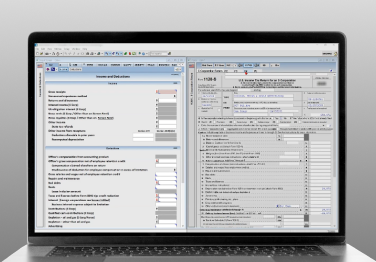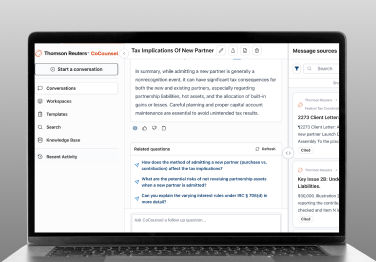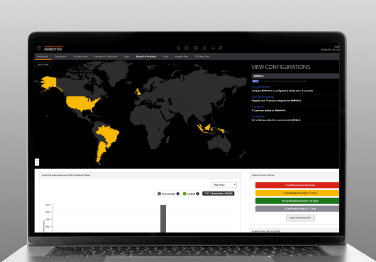Tax and accounting software and research solutions
Explore our tax, accounting, and research solutions to help manage both day-to-day tasks and future growth
Tax and accounting
Expand your team’s capabilities with premier tax and accounting software and research solutions.
Explore tax and accounting
International trade and supply chain
Communicate, manage, and track your partners within the global supply chain to identify any risks to remaining compliant.
Explore international trade and supply chain
Tax, accounting, and trade solutions
Take advantage of our groundbreaking software to help make your business a one-stop, full-service resource.
UltraTax CS
Professional tax software for tax preparers and accountants, including a full line of federal, state, and local programs. Save time with tax planning, preparation, and compliance.
CoCounsel Tax
Transform your tax practice with CoCounsel Tax, an AI-powered assistant that combines trustworthy answers, automation, and firm knowledge into one seamless platform. Enhance efficiency, reduce risk, and improve client confidence with CoCounsel Tax.
ONESOURCE Determination
Market-leading global tax determination software that automates tax calculations. Report on sales and use tax, GST, VAT, and excise tax using the latest rates and rules.
Tax and trade insights
Stay updated with our regularly published tax and trade tips and advice.

AI
Challenges of adopting AI in accounting firms
Identify barriers to AI adoption for your firm

TRADE
How integrated global trade content systems transform compliance into strategic advantage
Turn oversight into actionable global advantage

Tax
How accounting firms are overcoming challenges with AI
Discover how AI can help your firm
Questions about our products and services? We’re here to support you.
Contact our team to learn more about our tax and accounting solutions.
Contact us


